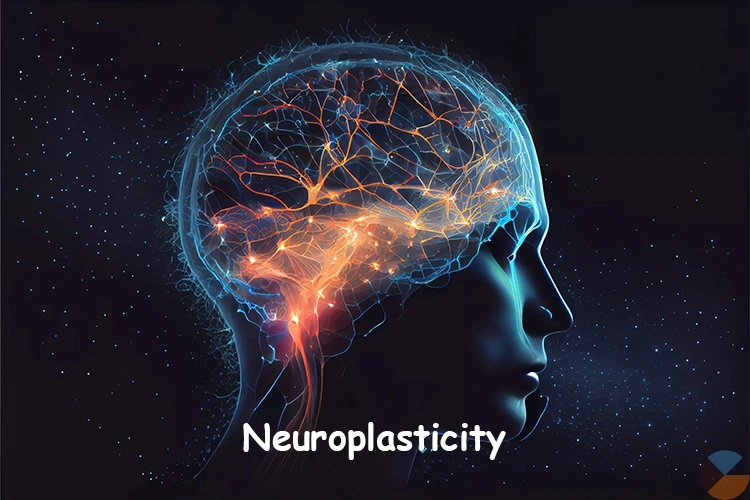In recent years, the concept of neuroplasticity has revolutionized our understanding of the human brain. This term, derived from “neuro,” relating to the nervous system, and “plasticity,” referring to the brain’s ability to change, encapsulates the brain's remarkable ability to adapt and reorganize itself throughout an individual's life. This article delves into the fascinating world of neuroplasticity, exploring its mechanisms, implications, and potential applications.
Understanding Neuroplasticity
Neuroplasticity is the brain's capacity to alter its structure and function in response to experience and environmental changes. This concept challenges the long-held belief that the brain's development is static after a certain age. Instead, neuroplasticity suggests that our brain continues to adapt, learn, and evolve well into adulthood.
Types of Neuroplasticity
Structural Plasticity: This type involves physical changes in the brain’s structure. Structural plasticity refers to the brain's ability to rewire and form new neural connections, thereby changing its anatomical structure. For example, when learning a new skill, such as playing a musical instrument, the brain undergoes structural changes, increasing the size and connectivity of specific brain regions involved in that skill.
Functional Plasticity: This type of neuroplasticity allows the brain to reassign functions from damaged areas to intact regions. If a particular area of the brain is injured, functional plasticity enables other parts of the brain to take over the lost functions. This adaptability is particularly evident in stroke recovery, where patients often regain lost abilities through rehabilitation and therapy.
Mechanisms of Neuroplasticity
Neuroplasticity operates through several mechanisms that facilitate brain changes:
Synaptic Plasticity: This involves changes in the strength of connections between neurons (synapses). Long-Term Potentiation (LTP) and Long-Term Depression (LTD) are two key processes in synaptic plasticity. LTP strengthens synaptic connections, enhancing communication between neurons, while LTD weakens connections, which helps in memory pruning and learning adaptation.
Neurogenesis: The generation of new neurons from neural stem cells is known as neurogenesis. Although traditionally believed to occur only during early development, recent research shows that neurogenesis continues into adulthood, particularly in the hippocampus, a region crucial for learning and memory.
Axonal Sprouting: When neurons are damaged, the brain can compensate by forming new axonal branches to reconnect with other neurons. This process, known as axonal sprouting, helps in restoring lost functions and adapting to new conditions.
Factors Influencing Neuroplasticity
Several factors can impact the extent and effectiveness of neuroplasticity:
Age: While neuroplasticity occurs throughout life, it is generally more pronounced in younger individuals. Children's brains are highly adaptable, allowing them to learn and recover from injuries more effectively. However, adults also possess significant plasticity, especially with targeted interventions.
Experience and Learning: Engaging in new experiences, learning new skills, and challenging the brain through mental exercises can enhance neuroplasticity. Activities such as learning a new language, playing musical instruments, or solving complex problems stimulate brain activity and promote plastic changes.
Physical Exercise: Regular physical activity has been shown to boost neuroplasticity. Exercise increases blood flow to the brain, promotes the release of growth factors, and stimulates neurogenesis. Aerobic exercise, in particular, is beneficial for cognitive function and overall brain health.
Diet and Nutrition: A balanced diet rich in nutrients like omega-3 fatty acids, antioxidants, and vitamins supports brain health and neuroplasticity. Foods such as fish, berries, nuts, and leafy greens contribute to cognitive function and neuronal health.
Stress and Mental Health: Chronic stress and mental health conditions can negatively affect neuroplasticity. Stress hormones, such as cortisol, can impair synaptic plasticity and neurogenesis. Conversely, practices like mindfulness and relaxation techniques can promote a healthy brain environment and support neuroplasticity.
Applications of Neuroplasticity
The principles of neuroplasticity have significant implications for various fields, including medicine, education, and mental health.
Rehabilitation and Therapy
Neuroplasticity plays a crucial role in rehabilitation therapies for neurological conditions. After brain injuries, such as strokes, targeted therapies can stimulate neuroplasticity to help patients regain lost functions. Techniques like constraint-induced movement therapy and cognitive rehabilitation utilize neuroplasticity to encourage recovery and improve outcomes.
Cognitive Enhancement
Educational strategies that incorporate neuroplasticity principles can enhance learning and cognitive development. Techniques such as spaced repetition, active learning, and skill practice leverage neuroplasticity to improve memory retention and cognitive abilities.
Mental Health Interventions
Understanding neuroplasticity has led to new approaches in treating mental health conditions. Cognitive Behavioral Therapy (CBT) and other therapeutic modalities aim to modify maladaptive neural circuits, promoting healthier thought patterns and emotional responses. Additionally, research into neuroplasticity has explored the potential of interventions like transcranial magnetic stimulation (TMS) and neurofeedback to treat depression and anxiety.
Future Directions in Neuroplasticity Research
The field of neuroplasticity is rapidly evolving, with ongoing research exploring new frontiers and applications. Some key areas of interest include:
Neuroplasticity and Aging: Researchers are investigating how neuroplasticity changes with age and exploring strategies to maintain cognitive function and prevent age-related decline. Studies on cognitive training, physical exercise, and lifestyle interventions aim to enhance neuroplasticity in older adults.
**Genetics and Neuroplasticity: Understanding the genetic basis of neuroplasticity can provide insights into individual differences in brain adaptability and susceptibility to neurological disorders. Research into gene-environment interactions may reveal new targets for therapeutic interventions.
Technological Advancements: Advances in neuroimaging and brain-computer interfaces offer new tools for studying and harnessing neuroplasticity. Techniques such as functional magnetic resonance imaging (fMRI) and electroencephalography (EEG) enable researchers to visualize brain changes and monitor neuroplasticity in real-time.
Neuroplasticity and Neurodegenerative Diseases: Investigating how neuroplasticity can be leveraged to combat neurodegenerative diseases, such as Alzheimer's and Parkinson's, is a critical area of research. Developing strategies to enhance neuroplasticity may offer new avenues for slowing disease progression and improving patient outcomes.
Conclusion
Neuroplasticity is a groundbreaking concept that has transformed our understanding of the brain's capabilities. By recognizing the brain's ability to adapt and reorganize itself, we open up new possibilities for rehabilitation, cognitive enhancement, and mental health interventions. As research continues to unravel the complexities of neuroplasticity, it promises to unlock even more potential for improving brain health and function across the lifespan. Embracing the principles of neuroplasticity can lead to profound changes in how we approach learning, recovery, and mental well-being, ultimately enhancing our quality of life and cognitive resilience.









 Ingning
Ingning







